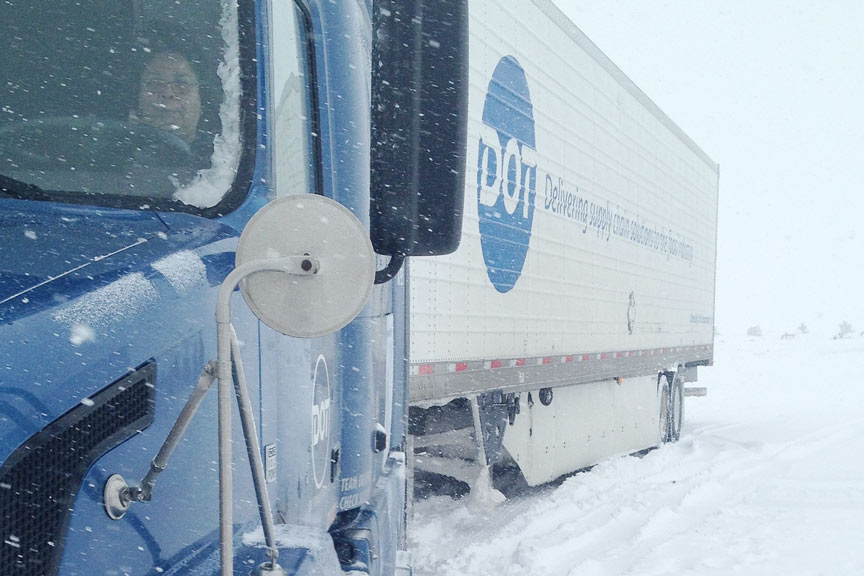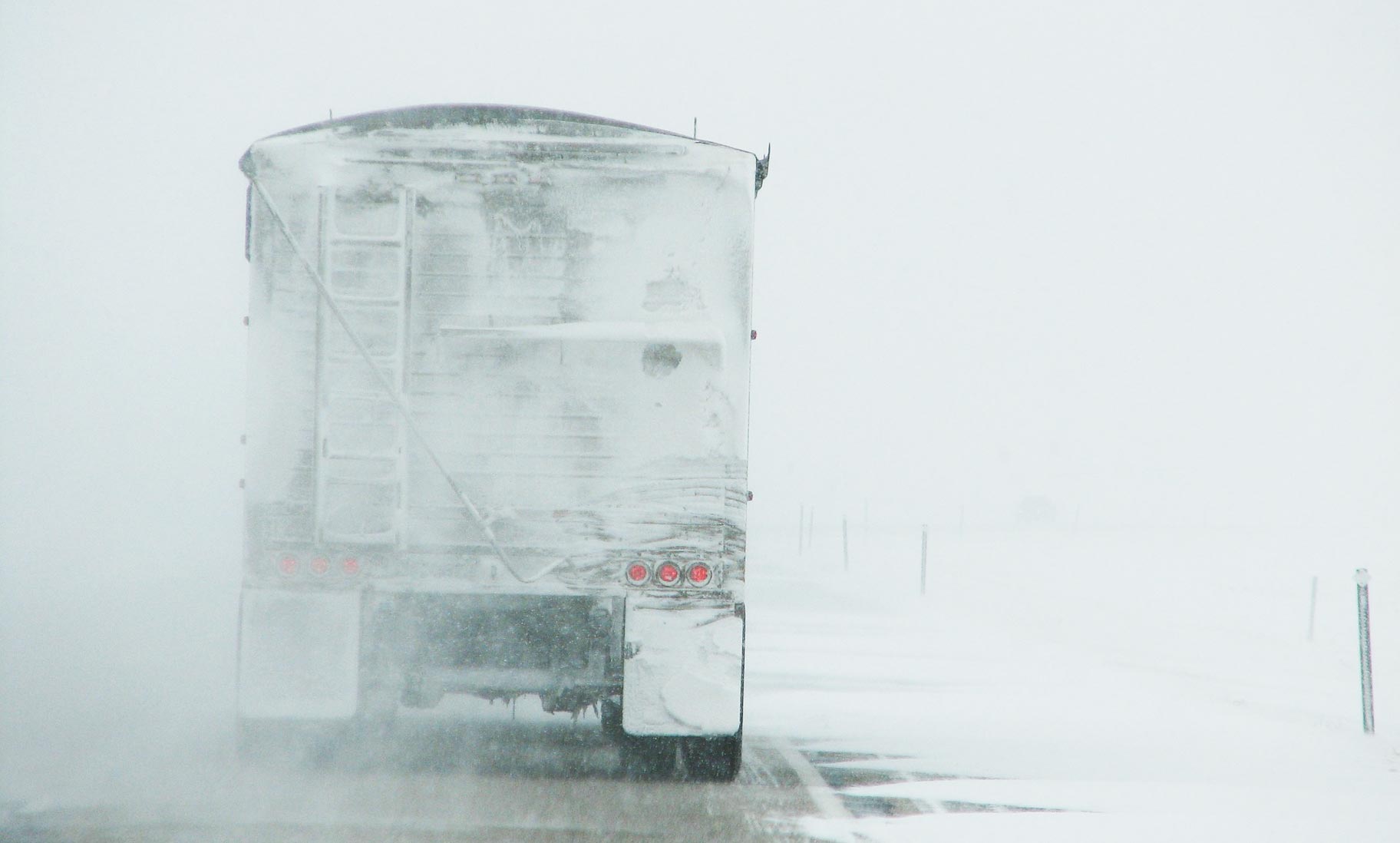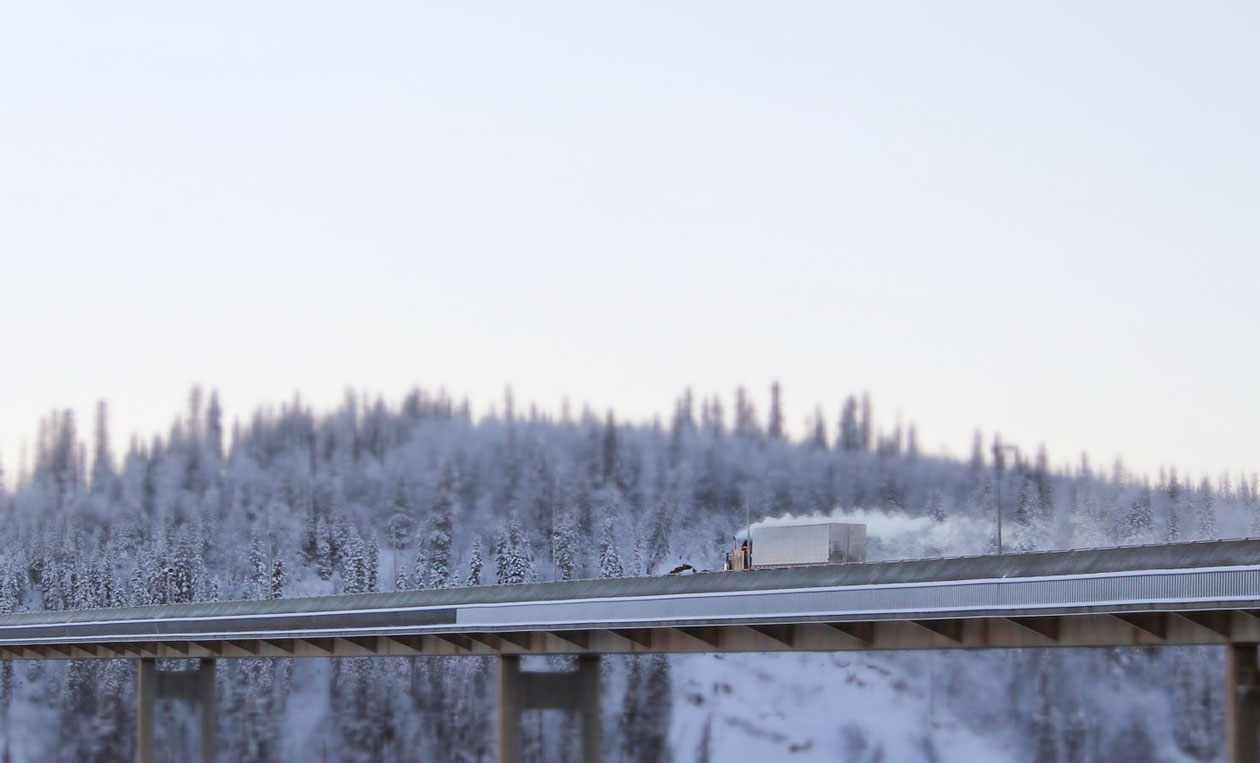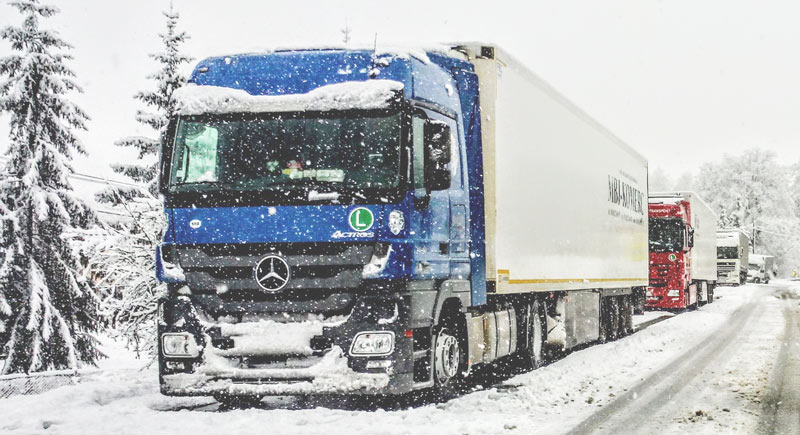How to Share the Road with Semi Trucks in the Winter
For most people, sharing the road with semi trucks is simply part of daily life. Whether you drive on a large highway for your morning commute or live on a well-trafficked road, semi trucks are simply part of the crowd. Some people get nervous when they feel “boxed in” by multiple semis, but for the […]

November 22, 2017

For most people, sharing the road with semi trucks is simply part of daily life. Whether you drive on a large highway for your morning commute or live on a well-trafficked road, semi trucks are simply part of the crowd. Some people get nervous when they feel “boxed in” by multiple semis, but for the most part, all different kinds of vehicles share Indiana’s roads every day without complaint.
In the winter, however, driving next to a semi might feel a little more nerve-wracking than usual. Indiana’s winters are typically anything but mild, making it important for everyone to be extra careful when there’s snow or ice. Sharing the road with a vehicle much larger than yours in less-than-ideal weather conditions can be a bit intimidating.
Here are some tips to help you share the road with semi trucks this winter.
1. Increase Your Following Distance

Typically, you’re supposed to stay about three or four seconds behind another vehicle so you have enough time to react if they stop suddenly. In winter weather, increase that to eight to ten seconds, especially with semi trucks.
Why increase your following distance? It takes everyone a lot longer to stop when roads are wet with snow or slippery with ice. If you choose to tailgate a semi truck in bad weather and they have to stop suddenly, you may slip under the trailer in what’s known as an underride accident. These accidents tend to result in catastrophic injuries.
Also, driving right behind a semi truck obstructs your vision. In normal conditions, the truck’s trailer will block your view of the road ahead, making it difficult to anticipate when the truck will stop. However, in rain or snow, the truck will also spray snow or slush onto cars behind it. Increasing your following distance will not only allow you to anticipate what’s ahead, but also to see what’s directly in front of you.
2. Be Careful When Passing

Passing semi trucks is risky already due to their many blind spots. You have to make sure you get past the semi quickly without speeding and have enough room in front of the semi to rejoin them in their lane of traffic if necessary.
Sometimes, people get a little nervous and speed a little too quickly past semis when they’re trying to pass. That can be incredibly dangerous when there’s snow and ice on the streets. In winter weather, you probably know that you’re supposed to drive slowly, but that advice is commonly misunderstood. It’s not necessarily that you have to drive 10 miles under the speed limit whenever there’s a fine layer of powder. It’s that you have to accelerate and decelerate slowly, or else you risk losing traction.
Before you pass a semi, make sure you have enough time to pass so you don’t feel pressured to accelerate at a dangerous pace. Begin to accelerate slowly, moving past the semi at a steady pace, and then decelerate gently once you can see the whole front of the semi in your rearview mirror.
Remember, a semi truck’s blind spot on its right side is almost double the size of the blind spot on its left side. Avoid passing a semi truck on the right, especially in the winter.
3. Use Caution on Snowy Hills

It can be difficult to surmount a snowy hill in your own vehicle due to a lack of traction. But for a big rig, it can be particularly dangerous, especially when it comes to descending.
You don’t want to be behind a semi truck that’s ascending, and you don’t want to be in front of one that’s descending. If the truck driver loses control while climbing a hill, the truck may slide backward. If the driver loses control on the way down the hill, the truck may slide forward at increasing speeds.
The best place to be if a truck’s ascent or descent looks questionable is in another lane of traffic. However, if you’re in a single lane of traffic, there are still other options. Slow down if you’re behind a truck that’s ascending and increase your following distance so you have time to react if things go poorly. If you’re in front of a semi truck that’s descending and you can’t move into another lane, consider slowly accelerating to put more distance between your car and the front of the truck.
4. Beware the Increase in Semi Truck Traffic

If the weather is bad enough, many people simply choose to stay home. However, semi truck drivers are professionals. Not only do they drive for a living in all sorts of weather, but they also have cargo that needs to be delivered by a certain date and time. Only the most extreme weather typically keeps semi truck drivers from hitting the road.
Because of this, you should be aware that if you chose to drive when the roads are less than ideal, you may have more semi trucks around you than usual. It’s even more important to know how to share the road with them safely.
Help from an Indiana Truck Accident Lawyer
If you’ve been injured in a semi truck accident during winter weather, Hensley Legal Group can help. Call us today or contact us online for a free case review.
Available 24/7
Free Case Review
You won’t pay any fees until we win your case.
It’s easy - you can: